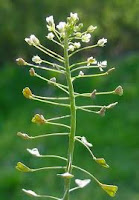You could be forgiven for thinking that the strawberry tree is so-called because its fruit taste like the strawberries which are ubiquitous these days, almost regardless of the season. However if you bit into one of these fruit expecting the luscious strawberry taste, you would be sorely disappointed, as they have a more delicate flavour, which may be an acquired taste. In fact the tree gets its name ‘unedo” from the Latin meaning “I eat only one.” This translation is open interpretation as it could mean that the fruit is so delicious that one is sufficient, although it probably means that the fruit is an acquired taste and one is enough. It is better tasting when cooked however and can be made into jams and preserves as it has a high pectin content.
 The strawberry tree is an evergreen and the flowers and fruit appear together in October through to December, as the flowers take almost a year to fully blossom. It can grow up to 10 metres tall, but is more often seen as a shrub than a tree in its wild state. It is a member of the Ericaceae family of plants so is related to heather and bilberries. It looks a little like a very red lychee when on the tree, but doesn’t have the same delicate flowery flavour and has an amber-coloured flesh. The fruit are ripe when they fall to the ground. It is native to southern Europe, northern France and south west Ireland, being found most plentifully around Lake Killarney, and grows in Lebanon and Turkey, where some research has been done on its properties and uses in traditional medicine.
The strawberry tree is an evergreen and the flowers and fruit appear together in October through to December, as the flowers take almost a year to fully blossom. It can grow up to 10 metres tall, but is more often seen as a shrub than a tree in its wild state. It is a member of the Ericaceae family of plants so is related to heather and bilberries. It looks a little like a very red lychee when on the tree, but doesn’t have the same delicate flowery flavour and has an amber-coloured flesh. The fruit are ripe when they fall to the ground. It is native to southern Europe, northern France and south west Ireland, being found most plentifully around Lake Killarney, and grows in Lebanon and Turkey, where some research has been done on its properties and uses in traditional medicine. In
In The fruit and leaves contain tannins although the fruit also contains pectin, so these are useful to treat diarrhoea when made into a tisane. The tisane made from the leaves has been used to lower blood pressure in Morocco Vancouver Island , Canada
Modern medical research has shown the leaves in particular to have potent antioxidant properties and one Turkish study “Antioxidant activity of Arbutus unedo leaves” ended by stating that the ethanol and methanol extracts of the leaves showed “Potent antioxidant activity”. This was published in Fitotherapia Vol. 74 (6) pp 597-99, with the research being done by Pabuçcuoğlu, a. et al., 2003.
Another study by Lidia Mendes, Victor de Freitas, Paula Baptiste and Márcia Carvalho, 2011, “Comparative antihemolytic and radical scavenging activities of the strawberry tree (Arbutus unedo L.) leaf and fruit” Vol. 49 (9) pp 2285-91 in the Food and Chemical Toxicology Journal published for the British Industrial Biological Research Association, was possibly the first study to test the extracts of the leaf on human biological membranes came to the conclusion that the leaves possess more potent medicinal activities than the fruit, particularly as regards antioxidant properties.
A study conducted by Moroccan scientists, Hassane Mekhl et al published in February 2006 in the Pharmacology and Pharmaceutical Medical Journal Vol.20 (2) pp 135-139 concluded that their results showed that extracts of the leaves were effective in treating high blood pressure, so bearing out the traditional use of the strawberry tree.
Yet another study by the Turks, Hatice Ertabaktar et al, 2009 “In vitro Activity of Arbutus unedo Leaf Extracts Against Trichomonas vaginalis Trophozoites” in the Turkish Parasitological Journal Vol.33 (4) 264-65, concluded that the extracts of leaves from the tree may prove effective in treating those STDs which are caused by the Trichomonas vaginalis bacteria. However they are unsure of what constituent of the leaf has this inhibitory effect.
The leaves contain flavonol glycosides such as quercetin and hyperin, (bioflavonoids) as well as juglanin found in walnuts, phenol glycosides including arbutin, lipids, tannins and vitamin E.
Perhaps you should look put at the strawberry tree you planted in the garden as an ornamental and view it in a new light.








































